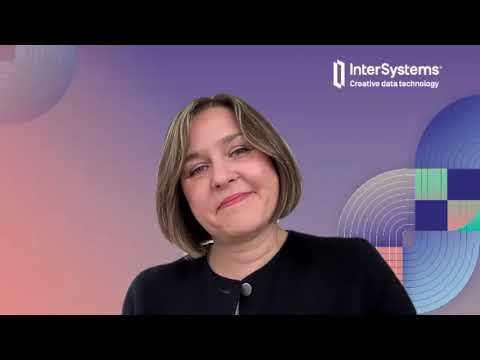A data fabric is an architecture that creates a unified, integrated layer for accessing and managing data across an organization, focusing on connectivity and interoperability.
A data mesh, on the other hand, is a decentralized approach that treats data as a product, emphasizing domain-specific ownership and governance by individual teams.
In this post, we'll unpack the core concepts, advantages, practical applications, and considerations for each methodology.
By the end, you'll have a comprehensive understanding of these paradigms and know how to make informed decisions to better harness the power of your data.

Understanding Data Fabric
A data fabric is an architecture and set of data services that provide consistent capabilities across a spectrum of endpoints in hybrid and multi-cloud environments. It integrates different data management processes including data discovery, governance, and orchestration, treating data as a single, accessible layer.
In other words, a data fabric is a system that smoothly connects and manages data whether it's stored inside the company's own computers or across different cloud services. It ensures that no matter where your data is, you can access and use it easily and reliably.
Core Principles of Data Fabric
The core principles of data fabric center around agility, flexibility, and a unified view of data across the enterprise.
- Agility: Data fabric allows for rapid adaptation to new data sources and evolving business needs.
- Flexibility: It supports a wide range of data sources, types, and storage locations.
- Unified View: Provides a holistic approach to data management, enabling access to all data within an organization.
Data Fabric Architecture
Data fabric architecture underpins the strategy with several key components.
- Data Pipelines: Automated pipelines handle ingestion, transformation, and movement of data.
- Data Governance: Policies ensure data quality, privacy, and compliance.
- Data Orchestration: A coordinated approach manages data across systems.
Data Fabric Example
Consider the example of a multinational financial services company that needs to integrate, manage and access data across multiple global divisions, including banking, investments, and insurance services.
This company faces the challenge of accessing, analyzing, and governing data that resides in different systems and platforms, including cloud environments, on-premises data centers, and third-party data services. To address these challenges, the company implements a data fabric architecture that enables:
- Seamless Data Integration: The data fabric integrates data from various sources, including transactional databases, CRM systems, market data feeds, and cloud storage services. This integration is facilitated by data virtualization and ETL (Extract, Transform, Load) technologies, allowing for real-time access and manipulation of data and, in some cases, without needing to physically move or replicate data across systems or data teams.
- Unified Data Governance and Quality: The data fabric approach incorporates a centralized data architecture that applies consistent data quality, privacy, and security policies across all data sources. This can include mechanisms for data classification, data lineage tracking, and compliance monitoring.
- Self-Service Data Access: The architecture provides a self-service data platform and discovery tools for business users, reducing IT bottlenecks and enabling faster decision-making. Users can query and visualize data across the enterprise through a unified interface, regardless of where the data physically resides.
Outcome
By implementing a data fabric, the financial services company can achieve a holistic view of its data assets, improve operational efficiency, and enhance decision-making capabilities.
The architecture enables the company to manage risk more effectively, deliver personalized services to customers, and drive innovation, all while maintaining high standards of data governance and compliance.
Understanding Data Mesh
The data mesh approach is gaining traction as a decentralized socio-technical framework for managing analytical data at scale. A data mesh recognizes data as a product, emphasizing the importance of domain-oriented decentralized data ownership and architecture.
In this framework, each domain within an organization is responsible for providing and maintaining their data as a product, making domain teams accountable for the data's quality and accessibility.

Data Mesh Principles
- Domain-Oriented Data Ownership and Architecture: A data mesh advocates for a design where data is managed by domain-specific teams, promoting a clearer understanding of data context and usage.
- Self-Serve Data Infrastructure as a Platform: The aim is to establish a self-serve data platform that allows domain teams to easily build their own data products and facilitate date discovery without deep technical expertise in distributed data systems.
- Interoperability and Standard Communication: A data mesh will typically enforce standardized protocols to ensure different data products can communicate and integrate with each other seamlessly.
- Governance Through Observability: A data mesh will generally have decentralized data governance, employing a global view of all domains to ensure compliance, standardization, and quality.
Organizational Considerations for Data Mesh
Implementing a data mesh requires an organization to adopt a cultural shift towards data democratization and a rethinking of traditional roles and responsibilities.
- Domain Expertise Empowerment: Teams must have the skills and knowledge to manage their data products autonomously.
- Technical Investment: An infrastructure that supports self-serve capabilities is foundational for the implementation of a data mesh.
- Change Management: Organizations must prepare for the governance and process changes that accompany the transition to a data mesh approach.
Data Mesh Example
Consider the example of a large e-commerce company that operates globally with multiple product lines, including electronics, home goods, clothing, and groceries. This company struggles with data silos across different departments, leading to inefficiencies, inconsistent data analytics, and challenges in rapidly innovating to meet customer needs.
To overcome these challenges, the company adopts a data mesh architecture, emphasizing decentralized data ownership and domain-oriented data architecture.
Implementation Scenario
Each product line is treated as a distinct domain with its own data products, owned and managed by cross-functional teams comprising members from IT, data science, operations, and business units.
- Domain-Oriented Data Ownership: The electronics, home goods, clothing, and groceries divisions each take responsibility for their data, including its quality, governance, and lifecycle management. This shift empowers teams to make quick, informed decisions based on their data insights.
- Self-Serve Data Infrastructure: The company invests in building a self-serve data platform that enables each domain team to access, process, and analyze data without heavy reliance on central IT resources. This platform includes tools for data ingestion, processing, storage, and analytics, tailored to the needs of each domain.
- Interoperability and Standardized Communication: Despite the decentralization, the company establishes common standards for data formats, APIs, and protocols to ensure interoperability between different domains' data products. This allows for seamless data sharing and integration, facilitating cross-domain analytics and insights.
- Data as a Product: Each domain treats its data as a product, with a focus on user needs, usability, and value. This includes defining clear data product specifications, maintaining documentation, and ensuring data products are discoverable and accessible to other domains and stakeholders within the company.
- Governance Through Observability: The company implements a federated governance model that balances autonomy with accountability. Each domain is responsible for adhering to company-wide data governance standards, while a centralized observability framework monitors compliance, data quality, and usage across all data products.
Outcome
Adopting a data mesh enables the e-commerce company to break down data silos, enhancing collaboration and innovation across its diverse product lines. By empowering domain-specific teams to manage their data independently, the company achieves faster time-to-market for new features and services, improved customer personalization, and more agile responses to market changes.
At the same time, the interoperability standards and federated governance model ensure that data remains a cohesive, strategic asset across the company.
Comparing Data Fabric and Data Mesh
Similarities:
- Both aim to improve accessibility and usability of data across the enterprise.
- They encourage an architectural approach to data management.
- They are not tied to a specific technology but are conceptual frameworks.
Differences

Choosing Between Data Fabric or Data Mesh: a Quick Guide
Deciding between a data fabric and a data mesh depends on your organization's specific needs, challenges, and existing data management capabilities.
Here are some considerations to help determine which approach might be more suitable.
Consider data fabric if your organization:
- Has a complex, distributed data landscape with the need to access and integrate data across various sources, environments (cloud, on-premises, edge), and platforms seamlessly.
- Prioritizes a unified view of data across the organization to support analytics, data science, and business intelligence efforts without wanting to overhaul existing infrastructure.
- Faces challenges in data governance and quality across disparate systems and needs a centralized mechanism to ensure consistency, compliance, and control.
- Looks for scalability and flexibility in managing data while minimizing the complexity for end-users, including non-technical stakeholders.
Consider data mesh if your organization:
- Operates in a domain-driven environment where different business units or teams have distinct data needs and would benefit from owning and managing their data products.
- Encounters bottlenecks in data access and utilization due to centralized data management practices, slowing down innovation and decision-making.
- Aims to foster a culture of data democratization and accountability, empowering teams to innovate and make decisions based on their local data insights.
- Has matured in its digital and data capabilities, with teams capable of handling the technological and operational responsibilities that come with decentralized data ownership.
General Guidance
- Organizational Size and Complexity: Larger, more complex organizations with diverse data sources and stringent governance requirements may lean towards a data fabric for its integrative and centralized management features. Conversely, organizations with a strong culture of autonomy and agility, where business units operate more independently, might find data mesh more appealing.
- Maturity in Data Management: If your organization is still developing its data management practices, starting with a data fabric might provide the foundational layer of integration and governance needed. As maturity grows, incorporating data mesh principles can further enhance autonomy and innovation.
The Bottom Line
Align the choice with your strategic objectives. If the goal is to improve efficiency, reduce operational silos, and enhance data governance on a large scale, a data fabric is likely your best bet. If the goal is to increase innovation, speed up decision-making, and empower teams with data autonomy, consider a data mesh.
Bloor Spotlight:
Data Fabric Overview
More In-Depth Technical Comparisons
Data Access and Management
A data fabric is designed to provide a unified and consistent layer of data access and management across diverse data sources, including on-premises databases, cloud storage, and even edge devices.
It leverages technologies such as data virtualization and federated query processing to enable real-time access and integration of data from these varied sources without needing to replicate the data into a centralized location.
Data fabric solutions will often employ advanced metadata management techniques and intelligent search capabilities to facilitate easier discovery and governance of data across the organization.
A data mesh, in contrast, decentralizes data management by treating data as a product, with domain-specific teams owning and managing their data.
Each team is responsible for their data's lifecycle, including its storage, quality, and accessibility, using technologies that best fit their domain's needs, such as databases tailored to specific types of data or processing needs.
Data Storage and Processing
Data fabric architectures often employ a data lake, multiple data warehouses, and multi-cloud storage solutions, integrated through a unified data layer.
This setup supports both batch and real-time data processing, analytics, and machine learning workflows, enabling organizations to derive insights from their data regardless of where it resides.
A data mesh approach typically does not prescribe specific storage or processing technologies.
Instead, they focus on enabling each domain to choose the tools and infrastructure that best meet their needs, whether it's a traditional relational database, a NoSQL database for unstructured data, or real-time processing engines like Apache Kafka or Apache Spark.
The emphasis is on empowering domain teams to build and manage their data products independently, with a focus on domain-specific requirements rather than a one-size-fits-all solution.
Technical Interoperability Challenges
Interoperability is a critical consideration for both data fabric and data mesh systems, albeit approached from different angles.
Data fabrics tackle interoperability through the implementation of standardized APIs, data models, and protocols across its integrated data management layer.
This requires significant upfront planning and ongoing management to ensure that new and existing data sources can be seamlessly integrated and accessed through the fabric.
Data meshes address interoperability through the adoption of domain-driven design principles, encouraging the use of common data formats, APIs, and protocols for data products.
This decentralized data architecture necessitates a strong organizational commitment to standardization and governance to avoid data silos and ensure that data products can be easily shared and integrated across domain boundaries.
Both architectures face challenges in ensuring that data remains accessible, governable, and secure across different environments and technologies
However, by leveraging modern data management practices and tools, organizations can mitigate these challenges and harness the full value of their data assets.
InterSystems and Smart Data Fabrics/Data Meshes: Enabling Advanced Data Management
InterSystems IRIS and Data Fabric Studio represent comprehensive solutions designed to unlock the true potential of data for businesses grappling with the increasing volume, variety, and complexity of their data assets.
By addressing the prevalent issues of data and application silos, these solutions facilitate a more integrated, efficient, and actionable approach to data across organizations.
InterSystems and Data Fabric
InterSystems offers two powerful solutions for implementing data fabric architectures:
InterSystems IRIS
InterSystems IRIS serves as a core technology within a data fabric architecture due to its comprehensive data management capabilities. Key features include:
Data Integration and Management
InterSystems IRIS provides robust capabilities for integrating data from various sources, making it an excellent fit for the unified data access and management layer central to Data Fabric. Its ability to handle both SQL and NoSQL data models and support for transactions and concurrent analytics aligns well with the flexibility and scalability needs of a Data Fabric.
Real-time Analytics and Machine Learning
With built-in support for real-time analytics, business intelligence, and machine learning, InterSystems IRIS can embed advanced analytical capabilities directly within the data fabric, enabling faster insights and decision-making across the organization.
Interoperability and Connectivity
The platform's strong interoperability features allow for easy connection between disparate systems and data sources, a critical requirement for creating a seamless data fabric. This includes support for various data standards and protocols, facilitating communication across different environments and applications.
InterSystems Data Fabric Studio
InterSystems Data Fabric Studio is a specialized solution that simplifies the implementation and management of data fabric architectures. It offers:
Unified Data Access
Provides a single point of access to all enterprise data, regardless of location or format, enabling seamless data integration and management across the organization.
Visual Development Environment
Features an intuitive interface for designing and implementing data fabric solutions, reducing complexity and accelerating development time.
Advanced Data Services
Delivers built-in capabilities for data transformation, quality management, and governance, ensuring consistent and reliable data across the enterprise.
Scalable Architecture
Supports growing data volumes and evolving business needs with a highly scalable and flexible architecture.
Real-time Processing
Enables real-time data processing and analytics, supporting immediate decision-making and action.
InterSystems and Data Mesh
While Data Mesh emphasizes decentralized data ownership and domain-driven design, InterSystems solutions can play a supportive role, especially in aspects like:
Domain-specific Data Services
Both InterSystems IRIS and Data Fabric Studio's capabilities can be utilized to develop and manage domain-specific data services, supporting the autonomy of domain teams in managing their data products. Their scalability and performance can serve the high demands of domain-centric operations.
Data Governance and Observability
Although Data Mesh advocates for decentralized governance, InterSystems solutions support this model by providing tools for data quality, security, and compliance that can be leveraged by individual domains, as well as observability features to monitor the health and usage of data products across the mesh.
Next Steps
InterSystems' comprehensive data management solutions embody the future of data management, aligning closely with the principles of Smart Data Fabrics and offering potential pathways toward implementing data mesh architectures.
Through their emphasis on analytics integration, legacy system compatibility, and high-performance capabilities, these solutions pave the way for organizations to achieve a new level of efficiency, insight, and value from their data assets.































